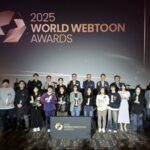Korean Semiconductors Caught in the Middle: Facing Pressure from U.S., China, and Japan
Eugene Park Views

As artificial intelligence (AI) is being recognized as a key industry that will determine the survival of nations and companies, the landscape of the semiconductor industry closely tied to AI is being shaken. There was no problem growing by producing high-quality products at a high yield in the past according to the customers’ orders. However, from now on, it is necessary to secure competitiveness against the nationalism of the United States, China, Japan, and the European Union (EU). In other words, the semiconductor “game” rules are changing.
A senior official in the semiconductor industry said on the 21st, “While the semiconductor industries in the United States and Japan are stretching out based on software competitiveness and massive subsidies, China is also finding its own way despite the U.S. containment,” and warned, “Samsung and SK Hynix could become “nutcrackers” stuck between the U.S., China, and Japan if they’re not careful.”
The U.S. is not to be taken lightly. The U.S. government promised to give subsidies to foreign companies, including Samsung Electronics, and domestic companies when it implemented the Semiconductor Support Act (CHIPS Act) last year. However, it has favored domestic companies such as Microchip Technology ($162 million) and GlobalFoundries ($1.5 billion). BAE Systems in the UK also received a subsidy, but only $35 million.
There is speculation that the U.S. has turned its direction towards prioritizing domestic companies for subsidies. From the perspective of President Joe Biden, who is seeking re-election, it would be advantageous to secure voter support by executing subsidies centered on domestic interests. If former President Donald Trump is elected, the subsidy execution plan could be scrapped entirely. Cash-strapped Samsung Electronics could change its semiconductor strategy depending on the results of the U.S. presidential election.
China’s semiconductor push is also threatening Samsung. Deutsche Bank recently announced in its 2024 semiconductor industry outlook report that “concerns about oversupply due to China’s aggressive expansion are growing” and “China’s semiconductor production will increase by 13% compared to last year.” It is also predicted that major Chinese semiconductor companies such as SMIC and Hua Hong Semiconductor will significantly increase the production of semiconductors for 28-nano processes or above that can be produced with old semiconductor equipment.
Market research firm IDC also predicted that China’s foundry market share will increase from 27% last year to 29% in 2027, and the outsourced semiconductor assembly and test (OSAT) market share will increase from 22.1% to 22.4%. Despite the fierce containment efforts by the U.S., it can be interpreted that China has achieved some success in self-sufficiency centered on legacy (old) semiconductor products. A semiconductor industry official said, “As the U.S.-China power struggle centered on semiconductors unfolds in various ways, it adds complexity to Samsung’s calculations.”















Most Commented